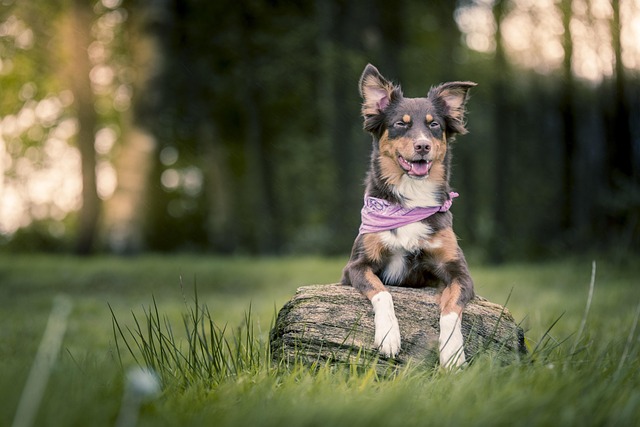
How to train a dog to bite back?
Training a dog to have defensive biting ability is not merely about releasing its attack instincts. Instead, it is based on a high level of trust between humans and dogs.
When you are full of joy and ready to take your dog for a walk, it hides under the sofa as soon as it sees the leash, its eyes full of resistance; Or as soon as you put a traction rope on it, it rolls in place and desperately breaks free, leaving you both helpless and anxious. The resistance of a dog to a leash is like a barrier between its owner and the beautiful moments of strolling. In fact, every dog can learn to willingly accept a leash, and the key is to use the right methods, love, and patience to build a bridge of trust for them.
Dogs resist wearing leashes due to their instinctive fear and discomfort towards unfamiliar things. In the perception of dogs, the sudden appearance of a leash is a strange restraint. When the leash is wrapped around their body, it restricts their free space of movement, and this feeling of being restrained can cause them strong anxiety. Just like when humans are suddenly put on heavy shackles, they also feel suppressed and resisted. Some dogs, when wearing a leash for the first time, may accidentally pinch their neck due to improper handling by their owner, causing painful memories and developing a fear of the leash. Some dogs with sensitive personalities have a slower process of accepting new things and require more time and guidance to let go of their guard.
To encourage dogs to voluntarily wear leashes, establishing a positive conditioned reflex is key. Firstly, place the leash in front of the dog and allow it to freely sniff and explore. During this process, dogs will recognize the leash through their sense of smell and touch, eliminating any unfamiliarity with it. When the dog actively approaches the leash, immediately reward it with delicious snacks, such as a small piece of chicken jerky or cheese, while praising it in a gentle tone, allowing the dog to associate the leash with beautiful things. Just as children who receive their beloved candy will develop a favorable impression of the person who gives it, dogs will gradually develop a positive impression of leashes.
Next, try gently picking up the leash and touching the dog's body. Starting from its back and abdomen, the movements should be gentle and slow. Once the dog does not show resistance, reward snacks and praise immediately. Gradually transition to putting the leash around the dog's neck or body, without tightening it yet, allowing it to adapt to the feeling of the leash briefly touching the body. The wearing time can start from a few seconds each time, and gradually increase as the dog's adaptation level improves. Throughout the entire process, it is important to closely monitor the dog's reaction. If it experiences nervousness or unease, immediately stop the operation, provide comfort, and wait for it to relax before continuing.

After the dog gradually adapts to wearing the leash, it can start accompanying training. At the beginning, in a spacious space at home, put a leash on the dog, hold snacks in hand, call the dog's name, and when it walks up to you, give the snack reward and slowly move forward. If the dog can walk with you, constantly give rewards and encouragement; If the dog is pulling or tugging on the leash, do not pull hard, but stop and wait for the dog to calm down before continuing to move forward. Through repeated training, dogs understand that following their owner's footsteps can earn rewards, and thus learn to move harmoniously with their owner under the constraint of the leash.
In addition to training methods, choosing the appropriate traction rope is also crucial. The material and size of the leash can affect the wearing experience of dogs. For small dogs, you can choose soft cotton or nylon leash, which is lightweight and will not cause too much burden to the dog; Medium to large dogs require stronger and more durable towing ropes, but also pay attention to comfort, avoiding choosing ropes with hard materials and rough edges to prevent friction on the dog's skin. At the same time, the size of the towing rope should be appropriate. If it is too loose, it is easy to fall off and cannot provide restraint. If it is too tight, it will make the dog feel uncomfortable and even strangle its body. When purchasing a leash, it is best to try it on for the dog on site and adjust it to a tightness that can easily insert two fingers.
During the training process, the owner's emotions and attitude can also have a significant impact on the dog. If a dog becomes impatient and reprimanded for not cooperating for a moment, it will only exacerbate the dog's fear and resistance to the leash. Dogs are very sensitive animals, they can keenly perceive changes in their owners' emotions. So, regardless of the progress of the training, it is important to maintain patience and gentleness, and guide the dog with love and tolerance. Every successful attempt is worth being proud of for our dog; Every small progress is an accumulation of trust between us and our dogs.
When one day you pick up the leash and the dog happily runs up to you, stretches out its neck to wait for it to be worn, and then happily follows you out, running freely in the sunshine, you will understand that all the effort and dedication are worth it. Encouraging dogs to voluntarily wear leashes is not only to ensure their safety, but also to foster a loving interaction between us and our dogs, and is an important step in establishing a deep trust relationship. With this trust and love, go explore more beautiful scenery with your dog.

Training a dog to have defensive biting ability is not merely about releasing its attack instincts. Instead, it is based on a high level of trust between humans and dogs.

When we watch dogs sniffing around with curiosity, their smart eyes flashing with the light of exploration, we will realize their innate instinct of exploration.

When your lovely Teddy suddenly bares its tiny teeth and nibbles at your fingers or clothes, or accidentally scratches your skin during play,

In the morning, sunlight filters through the window into the room as you carry a bowl of carefully prepared dog food toward the shepherd dog.

In the world of dogs, smell is their unique language for perceiving the outside world and a mysterious bridge for communicating with humans. Dogs' sense of smell is dozens or even hundreds of times more sensitive than that of humans.

When dogs explore the world with their teeth, furniture often becomes their "teething victims." This not only frustrates owners but also reveals the deeper needs behind their behavior.